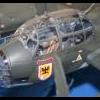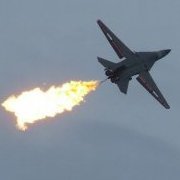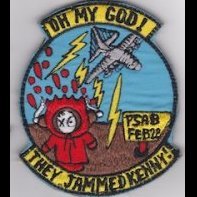Leaderboard
Popular Content
Showing content with the highest reputation on 01/11/20 in all areas
-
Development and design: The Atlantic is a NATO project that found its origin in the fifties of the last century. The first official order was placed on June 6, 1963. It comprised 20 aircraft for the France Naval Air Arm. Followed by 20 aircraft for the Federal German Navy. (Marineflieger) In a later stadium the France Navy ordered another 20 aircraft. These 60 airframes were all delivered at the end of 1968. That same year the Royal Netherlands Navy ordered nine aircraft, as a replacement for the decommissioned aircraft carrier Hr.Ms. Karel Doorman. Italy also joined the French-German consortium with Aeritalia and Alfa Romea and ordered 18 aircraft in October 1968. In 1986 the French Navy sold 3 airframes to the Pakistan Navy As mentioned, twenty airframes were delivered to the German Federal Naval Air Arm (Marineflieger) between 1966/1967. One was lost in a crash during landing due to crew failure. Due to the fact this was a short test sortie, the crew consisting out of pilot, co-pilot and flight engineer could depart the aircraft without loss of life. The damage was so extensive, that the aircraft was a complete write off. Cause of accident: “The aircraft landed in such a steep angle, without correction just for touch down, that on impact it more or less completely toppled over and broke off behind the nose section” (picture attached) So, you can say, that the Marineflieger, taking into consideration that the aircraft was operational from 1966 until 2005, achieved an excellent safety record Flight Characteristics in General: The aircraft empty weighs 24.000 KG. Maximum take-off weight by a long-range maritime patrol is 43.500 kg. Extraordinary is the fact that it can also land with the same weight in the airframe. Length:31.75 – Width 36.30 – Height 11.33 (All meters) Propulsion: The very reliable 2 Rolls Royce Tyne R. Type 20 MK21, each with 6105 HP, makes sure there is enough thrust for comfortable maneuvering the aircraft in all kinds of weather conditions. When the throttle is fully opened, it can reach a speed of 300 knots = 556 KM/H. Normal procedure during patrols are 170 knots = 314 KM/H. Fully topped up, under good conditions, it can “Hang” in the air for 18 hours. Flight level: From just above sea level to 10 KM maximum (32800 feet). Due to its special (boat-shape), it was able to stay afloat after a water landing in calm conditions. (See attached picture from a Dutch Atlantic in the drink. Perfect landing an no casualties.) Crew: Normally 12 persons, but there is seating arrangement for 25 persons. The aircrew is not under the command of the senior flight officer, but the Tactical Coordinator. Basically, this officer is responsible for carrying out the tasking. The Senior pilot is responsible for flight safety and follows the orders from the Tactical Coordinator. The third person in the cockpit is the flight engineer, normally a highly experienced Senior Non-Commissioned officer (SNCO – WO/WO1). Operating the on-board sensors is performed by officers and NCO/SNCO. There is a galley and dedicated toilet on board. (Not on the Neptune’s). If necessary, part of the crew can rest in folding berths. Armament: Depth charges, AS12 rockets, MK44 torpedoes, laser guided bombs (French Navy), cargo canisters, SAR equipment. Updates: The French, Italian and German Navy constantly updated airframes during their life cycle. These updates were far reaching to keep them up to date. Some airframes were even modernized to function in the ELINT role. (Electronic Intelligence Gathering) Current situation regarding the fleet of Atlantics. Germany: At this moment, the German Atlantics are all decommissioned. Some found their way to museums, but most airframes ended up on the scrap yard. The Atlantic has been replaced by second hand former Royal Netherlands Navy Lockheed P-3C Orions. France: The French naval Air Force is still operating several Atlantic NG (New Generation). Italy: The Italian Air Force, after 45 years of service, has decommissioned its fleet of Atlantics and is in the process of replacing the Breguet with the P-72A, a militarized ATR-72-600. The Netherlands: The Netherlands lost three out of its fleet of nine with loss of life. In 1984 the last operational flight was performed. Destination was the weather ship for making meteorological observations for shipping, air lines, shore stations “Cumulus’ that was collecting weather data for worldwide use. The crew had to drop a mail canister with mail and goodies for Christmas. The Atlantics were replaced by thirteen P-3 Orions. France/Pakistan In November 1985, the remaining six airframes were sold to the French government. Rumors suggest, that of this batch, three were sold to the Pakistan Navy. Serving 29 Squadron at the Naval Air Base Karachi-Faisal, near Naval Base Mehran. Fact is that a Pakistan Atlantic was shot down by an Indian Air Force MIG 21 on the 10th of August 1999. No survivors. The Kit: This came about in 2003, with the Revell kit numbers 04329-04384. Bringing this model on the market was a risk. Big, ugly, and not highly trendy, but fellow modelers, an important maritime military aircraft. Thank you Revell for bringing this model on the market. It builds like a dream. The only thing I missed was the extra wing spar as extra support / alignment for the (large) wings. I made my own wing spar. I got it wrong with the weight and ended up with a tail sitter, despite adding 80 grams in an Evergreen box, filled with PVC glue. Most difficult, was the Super Decal Sheet. It represents the German Federal Flag, over the full length from the airframe. After completing this lengthy task, I still needed to airbrush, to get the flag complete. I can assure you, that additional airbrushing next and onto decals is nerve wrecking. You cannot use tape and must resort to pieces of carton. Loose in the hand and hope for the best. It worked out. The crew access at the end of the airframe is open, with complete interior until the pressurized door from the crew compartment. The weapons bay is open and loaded with torpedoes and depth charges. Interesting is the weapon bay door, is that they slide open on a rail, directly next to the airframe. The first slide (port and starboard) has a flexible middle, so that it can form around the root of the wing. Diorama: This diorama depicts German Navy Atlantic 61-11 in an incredibly special paint scheme, to celebrate the 50th anniversary of the German Air Force in 2006. This specific Atlantic belonged to Marineflieger Geschwader 3 and was home based on the Fliegerhorst (Naval Air Station (NAS) Nordholz. The apron is quite large and gives the opportunity to add a flight crew and some vehicles to make it livelier. A time-consuming subject, and I am glad it is finished. Additional figurines and vehicles: The flight crew (Shapeways Figurines) are posed near the back entrance and is being photographed by the base photographer (ReedOak Figurines). Maintenance crew is from Preiser. Vehicles: 5ton MAN GP truck (Revell) – VW 2T Pick-up (PJ production) – Unimog tow tractor (Planet Models) – Tow bar (Revell) – Mobile air conditioning unit (Hasegawa) - APU for electric power (Hasegawa). This APU was not in use by the German Navy, but this example was in the stash. The gras is from the German firm Noch. The whole scene is very lightly weathered with a mix of umber oil/white spirit. Reference: 1. Breguet Atlantic in Dutch Service 1969-1984 by Martin de Boer 2. Air Forces magazines (Italian Air Force) 3. Air Relic magazines French Breguet 4. This months article in Scale Aircraft Modeling SAM< Vol.42 Issue 09 September 2020 Thanks for watching and reading this rather long information sheet. Regards, Orion The Netherlands.41 points
-
Here is the Tamiya F-117A Nighthawk. Bought on a whim and about half way through I was wondering why. The orginal idea was to try and tackle an All Black subject (something the Wallabies didn't do last night) There is a small write up of the build on my blog but for those not interested here are some images38 points
-
My 1/72 Hobbyboss F-14A is now complete. The build was chronicled in a work in progress thread that allowed me to voice some of the frustrations that the build presented and for the fabulous support from the membership here to help maintain my enthusiasm for the build, which had become a little strained on occasion. So, thank you all for that. This started with a number of early lockdown messages back and forth with a old friend, realising that we shared other interests to the ones we knew, and started a good lockdown-relieving ongoing discussion surrounding F14 kits’ accuracies, oddities, benefits and shortcuts. As a result, the stash of to be built models increased so that most of the “modern” offerings are now sat on the shelf awaiting attention. Whilst initially inspired by the Finemolds kit articles that had appeared in mags earlier in the year, and falling back in love with the colourful scheme of Fighter Squadron 111, and eventually acquiring a FM kit, the details it offered looked as though some practice would be needed elsewhere first if I was to achieve a finish that I was satisfied with. Having read plenty of articles, I realised that to achieve the type of finish I sought, moving from enamels to acrylics might be useful. I’d always used enamels for railway (railmatch and precision enamels) and humbrol enamels on aircraft (even back in the 80s when I last built them), so it was what I was familiar with. But the results and subtle effects that seemed potentially achievable with acrylics seemed too good to ignore. On this, I’d read up on a number of paint systems, realising that there’s a need to deal with the paint, thinner and airbrush cleaner almost as a set. Tony Oliver’s impressive Hobbyboss Tomcat thread (which was an inspiration) covered a number of different paint systems and it was the Mission Models paints that I eventually decided upon. When it came to colour matching the red of the Furball transfers, the MM Insignia red didn’t suit, and I ended up trying some MRP acrylic lacquers whose insignia red was a perfect match. So, in order to try out the paint systems and experiment a bit, a simpler kit than the FM one was sought. The Hobbyboss kit was seen as one of the simpler modern offerings, and therefore a good place to start. On inspection (and following Tony Oliver’s thread) a number of improvements and fixes were identified ... and a selection of aftermarket bits purchased, some prototype bits tried and some scratch building using plasticard, stretched sprue and some metal wire were incorporated. Whilst simpler and cheaper than most kits, I suppose that by the time I’d finished, the cost was comparable to a GWH kit, and the difficulties experienced meant that the swear jar contents would probably fund the next few builds. Anyway, I need to finish the WIP thread with the last assembly shots (I must do that) but a summary of the alterations and new bits follows. If I remember anything else after I’ve posted this, I’ll update the post. 1. Rear Ventral fins removed and replaced. Initially with Quickboost bits that were fragile and finally with GWH kit fins (each kit has two sets) 2. Quickboost IR/TV optical and ALQ-100 undernose antenna. The F-14A kit only has the original ALQ-100 antenna and whilst I noticed that the optical unit is available in the F-14D kit (that I had in the stash too), the Quickboost one was crisper. 3. The pilot seats sat quite low and looked a little simple; replaced with Aires seats. Detailed with Eduard painted photoetch parts. 4. Cockpit tub detailed with Eduard painted photoetch parts 5. Front and rear outside cockpit step reinforcement removed (sanded down and re-engrave) 6. Scratchbuilt and then sourced resin replacement triangular frame for aft of RIO’s seat. 7. Canopy and cockpit frame detailing per Eduard photoetch parts 8. Masters turned brass alpha probe and AOA probe 9. Additional spine antenna removed (not needed for 161621) 10. Fuel tanks repositioned by about 4.5mm aft and 1mm outboard of provisioned holes 11. Eduard external photo etch parts set – where appropriate. 12. Eduard internal photo etch parts set – where appropriate. 13. Wheels: Armoury nose wheels and True Details main wheels 14. Undercarriage doors (resin quickboost hybrid) and originals with Eduard PE 15. Scratch built tail cap fairing 16. Aires engine exhausts and cans; reheat ring Aires/Eduard combination 17. Transfers by Furball, adapted to suit dimensions of Hobbyboss model and some from the kit. 18. Paints a combination of Mission Models and MRP, metal sections using Alclad II and some interior details using Humbrol enamels. Misson Models and Alclad (Aqua gloss) varnish. ... and probably some bits I forgot. Some bits I’ve ignored, such as the inner glove stiffeners being too short, the intakes lacking any form of detail and the wing access cover engravings being a work of fiction. So, without further ado, or waffle, here’s some photos. Tomcat Miss Molly study by Jonathan Hughes, on Flickr Sundowners CAG Bird rear quarter by Jonathan Hughes, on Flickr Cockpit and canopy detail by Jonathan Hughes, on Flickr Cockpit details by Jonathan Hughes, on Flickr Tailpipe and reheat rings detail by Jonathan Hughes, on Flickr undersides by Jonathan Hughes, on Flickr F-14 top side by Jonathan Hughes, on Flickr Sundowners CAG by Jonathan Hughes, on Flickr It was a build that I'm pleased is finished... and now time to ponder some crew (I've some Reedoak ones that arrived) and then the next Grumman Cat. Jonathan21 points
-
Junkers Ju 88-A1 2/Kgr. 806, M7+DK Shot down by members of Yellow Flight, 312 Sqn. over Liverpool, 8th October 1940 by John L, on Flickr by John L, on Flickr by John L, on Flickr by John L, on Flickr by John L, on Flickr21 points
-
RAF 312 (Czech) Sqn Hawker Hurricane Mk.1, L1807, DU-B Sergeant Josef Stehlik Speke , 8th October 1940 by John L, on Flickr by John L, on Flickr by John L, on Flickr by John L, on Flickr21 points
-
Hello all, My eighth completion of the year is the venerable Hasegawa 1/48 F-16A. I believe this tooling originates from 1983, which makes it kind of sad that IMO this is still the best kit of the F-16A available in 2020! Aftermarket is limited to a Quickboost seat and Eduard main wheels. The nose pitot is scratchbuilt. Paint is MRP and Hataka lacquer and the flat finish is Mr Color GX113 thinned with Mr Rapid Thinner, which has resulted in a grittier finish than when I use Mr Leveling Thinner. The decals are from the Kinetic F-16A/B kit and are not quite accurate in detail. Thanks for looking and a more thorough build review is at https://jonbryon.com/hasegawa-1-48-lockheed-general-dynamics-f-16a-fighting-falcon/. Comments welcome. Jon20 points
-
Howdy Everyone, Finished this one last week, so thought I`d bother you with some pic`s 🙂 My attempt at Special Hobby`s 1/48 Wirraway kit I`d recently been re-reading Mark Johnstones book ` Whispering Death ` which gave me the inspiration to add one to the collection...... .....although not entirely successful as a fighter or dive bomber, they excelled at artillery spotting, search and rescue and forward air control type missions Built almost completely from the box contents with only: Brake pipes, engine pushrods and ignition harness, trim tab actuators on the elevators and aerial wires added. Managed to crack the canopy cutting the bit off the end and repaired with a piece of T-6 or Harvard canopy ( I think ) from the spares box I was a bit apprehensive of the kit after building SH`s Boomerang but this is a far more civilised experience Hope you enjoy, thanks for looking Cheers Russ19 points
-
Beautiful little kit from Airfix, an absolute gem! Straight out of the box with kit decals. I’d quite happily make many of these in different colour schemes. I don’t often say that about kits.. Guy17 points
-
Heller L091 Bloch 152, kindly donated by Heather: Build thread is here. Thanks for hosting a brilliant GB! Regards, Adrian17 points
-
Ciao from Italy.....my last built:1\48 Hasegawa F4U-5NL In Argentinian service......😉15 points
-
Here's my Dewoitine D520. Kit numberL092 from1966. An enjoyable build that went together smoothly enough. The prop got damaged during picture taking, so some shots show the Heller one, some a Novo substitute. Build thread here: And here's the model itself.15 points
-
Heller L760 Renault R8 Gordini. For those who have been following the build thread - "no rubber was harmed during the making of this kit!"15 points
-
Hi, It was sprint to the finish...the exhausts are still glowing.😀 This is the 1/48 Hasegawa kit kit built as a No1 Sqn aircraft. Here are my two builds together: I found it a great GB to participate in and a lot can be learned by browsing through its threads. Cheers, Stefan.14 points
-
Thanks guys - Chris those pics are particularly helpful - thank you I have been at the bench, but not modelling.. I have taken the drawings and photo's I have and have prepared the PE needed for the interior of the Fury - hundreds of parts in total. I also prepared the instruments which I will get made as decals in my next airscale stock order.. first the PE fret - this has an F4U panel in the corner for a fellow modeller in 1/18 who goes to the n'th degree like I try to to be accurate in every detail (you know who you are Jay...) ..here we have brackets, IP, anciliaries, seat bits, guns bits, rudder & control stick parts and a set of formers that surround the tube structure to give 'body' to the fuselage.. ..a bit closer.. ..and here is the IP taken from a drawing with the instruments I could identify for the Fury 1.. the drawing is for a Nimrod, but the only difference I could find was the removal of two switches on the left of the panel.. ..need to get these into PPD and Fantasy Printshop for production now, while I remake the seat as the one I made differs from the drawings.. ..that was a LOT of work.. TTFN Peter13 points
-
So if the anything but injection wins I'm making a wooden bird box in the shape of Hitlers Berghof,Saturn IV out of fairy liquid bottles. the forth bridge out of matchsticks and my biggie will be a full size Colditz glider in the loft from bedsheets and wooden floorboards.13 points
-
This US Army trailer is a tank-type drinking water supply with a 250-gallon tank capacity (about 950 liters). The kit is from Italeri, scale 1/35. For the model to look more interesting, I added the red cross decals (BisonDecals) and the hose that comes in the kit, was replaced by a tap, from the Tamiya jerrycans set. Once again, we see a brick floor here. This is another scenario, which is part of a project of mine on a series of dioramas on the Netherlands in 1944-45. These American trailers will do just fine to complement the scene of a diorama. But we have to put a very varied load of accessories, such as ration boxes, backpacks ... to get a more attractive look. The Italeri kit is easy to assemble and has been painted with acrylics and finished as usual, oil paints, enamel washing.... I found a very cool decal to reproduce the plate with the manufacturer's identification, which gives the model more realism. Thanks for watching. Best, Fábio.12 points
-
Here is the second of two Armory 1:144 Messerschmitt Bf 109E-4s that I have completed this past week. It represents E-4/N Black Chevron and Bars, W.Nr 5819, flown by Oberstleutnant Adolf Galland, Geschwaderkommodore of JG 26 'Schlageter', Luftwaffe, at Audembert, France, in December 1940. For notes on the build check the other one (Wick's E-4). I added the telescopic sight from stretched sprue. The kit was built mostly OOB and fully painted and varnished by brush. Decals came from an MYK decal sheet. Thank you for looking and, as always, all comments are welcome. Miguel12 points
-
As Promised... As promised folks, an update on the tracks situation. Updates on this thread seem few and far between these days as I'm not getting to the workbench as often as I would like, furthermore it's often one-step-forward and two backwards with these tracks until I work out what I'm doing. First though; while I was in a lazy mood one day I thought I would tackle something a bit easier and sort out some surface details on this thing - panels and doors and so-forth. Normally to transfer shapes onto plastic I cut out the relevant shape from the plans and stick it onto the plastic with spray-on adhesive, but today I was feeling especially lazy and could not bothered walking the 10 m to the shed to get the spray. So, instead, I used this alternative method of transferring the shapes. Cut out the paper pattern, hold it against the plastic sheet and swipe a pencil a hundred times or so from the paper to the sheet. Work all around the outside. This will leave a mark-up as shown below. This is a good way to trace out the shape of paper pattern because the paper does not have a hard enough edge to trace around in the usual way. The process leaves a sort of 'shadow' mark-out like this. Which can be accurately cut out as required. Sticking these details on is now dead easy. Just mark out where they need to go - scrape most of the undercoat off in the relevant spot and stick them on with normal plastic cement. Now it's back to the tracks. At the end of the last post I had made a reasonable start on a set, but they laid dead flat. Now I have to make them curl up and wrap around the drive and idler wheels. The following sequence is the result of a fair bit of trial and error which involved nicking my finger with a scalpel - hence the blood on the tracks. Anyway - here's what I came up with in the end. It turns out that it's all fairly obvious... First - work out where the track must bend and deepen the notches between the track pads at each of those points. Ensure that the notch - although deepened - does not cut through the entire width of the plastic. Now gently bend the plastic until it yields (i.e. loses all strength without actually physically breaking off) at the desired point. Now the plastic strip that is the guts of the track is still in one piece but has an adjustable bend in it as shown below. Repeat the process ensuring that straight lengths of track are left straight and undamaged. Unfortunately some of the little sticky-out bits got a bit bent during some of this but they are all still present so that's a win. Now doing things a bit out of sensible sequence (I should have done this first) I did what @ArnoldAmbrose suggested and laid a strip of thin flexible plastic along the inside of the track to add strength. I also cut several short single links from the inside track layer (the bit with the little short sticky-out bits attached) and put them to one side. Now the single track lengths can be cemented onto the main track length at just the right position to engage with the drive wheel teeth as shown. And here's the result - at least at the front end - I have not dealt with the rear idler wheels yet. Not too bad I think! The idea's there, but I really have messed about doing this and with all of the experimentation and uncertainty involved I've certainty made a messy job of the tracks. I'm confident I know what I'm doing now though and am playing with the idea of using that knowledge to build a completely new set to a - hopefully - higher standard. I've got some annual leave coming up soon - so hope to see some faster progress on this in the next month or two. Steve12 points
-
Here is one of two Armory 1:144 Messerschmitt Bf 109E-4s that I have completed this past week. It represents Black Double Chevron, W.Nr 5344, flown by Hauptmann Helmut Wick, Gruppenkommandeur of I./JG 2 'Richtofen', Luftwaffe, at Brest, France, in October 1940. The Armory kit has enough optional parts to make any of the Emil subvariants with etched parts that give good scale thickness (or thinness) to some parts and a decal sheet covering 14 options (my kits came from Set #2 "Battle of Britain Aces"). Unfortunately, major parts suffer from excessive flash and overall fit of parts was poor with everything requiring trimming and sanding to get a good join. The kit also suffers from an inexcusable flaw: the main undercarriage legs are outboard of the wing roots (I didn't try to fix this). The kit was built mostly OOB and fully painted and varnished by brush. Decals came mostly from an MYK decal sheet but I had to use some from the kit's sheet to make Wick's aircraft before his last promotion. Thank you for looking and all comments are welcome as always Miguel11 points
-
Hi All! ZVEZDA (ex-Dragon) MIG in 1/72 My psychiatrist took a drink and left me alone. So I was able to do what I want for a while. Here is the result. Painted Gunze. Enjoy watching!10 points
-
10 points
-
"Never in the field of human conflict was so much owed by so many to so few" As today marks the last day of what was the official period of the Battle of Britain my contribution over from the Group build. These are the latest boxings from Airfix, built straight from the box with the kit's markings . May add a little more weathering but a bit of a rush at the end to finish them today.9 points
-
Hallo Here are some pictures of Luftwaffe equipment from WW2. It may be interesting for you, if you want to build any model cockpit more accurate. Happy modelling9 points
-
Information about the crew and aircraft from http://www.zzairwar.nl/dossiers/954.html : Photo of the graves, also from http://www.zzairwar.nl/dossiers/954.html : I started out wanting to build the best possible B.IV in 1/32 scale. I wanted to expose one of the engines and the project started out with trying to come up with a way to fit the Eduard Brassin Merlin intended for the Tamiya IV to HK Models Mosquito. Playing around with the parts I figured that it would be possible to fit the HK Models nose to the Tamiya airframe, which I thought would be the easiest way to incorporate the Brassin Merlin. The Tamiya kit also has more detailed wheel wells, and the rear fuselage is also more accurate (position of lights) - the HK Models fuselage has a generic "late" mark Mosquito. A problem with the HK Models mosquito is the size and the position of the nose windows; they are pointed down whereas they should be symmetrical and horizontal. They should also be a little bigger, but I didn't address that. So the build started with switching the left and right windows to fix the side windows issue. Cockpit was detailed with Profimodeller, Eduard, HK Models and Tamiya parts, as well as some scratchbuilt items. HK Models fuel tanks fitted to Tamiya wing centre section: Eduard Brassin engine: And finished: Thanks for looking & comments and criticism is always welcome! - Elger9 points
-
Hampering the barges - Valom H.P. Hampden B Mk.I WIP thread with references and background here: Not for the fainthearted, but worth spending a bit of extra time on. Probably won't go overboard on the internals next time, however Kit roundels & fin flashes Codes and serial from @PeterB. Transparencies and Masking set from AZmodel (must have) Vallejo Dark Earth 71.323 and 71.029 Tamiya XF-81 Dark Green 2 Vallejo Black & Tamiya XF-85 Tire black undersides. Bits & bobs & odds & ends for the internals you can't even see but it was fun building. And thank you to the hosts and all participants for the encouragement.9 points
-
HAWKER HURRICANE Mk. 1 501 Squadron, RAF Kenley, October 1940 Airfix 1/489 points
-
My latest work, since i usualy do airplanes ,same scale, this is not my "ordinary" job. Every comment and critique is helpful.Thanks for watching.8 points
-
G'day Chums,for a little light relief I thought I'd have a go at this one.It was too far advanced to qualify for the Panther GB so here we are instead.The kit was simple to assemble,the moulding can still give the industry a run for its money and the decals performed perfectly despite them being nearly as old as me.I failed to find any photography of the kit options so I went my own way with the paint job.I tried a few new things with the weathering too.The paint was all hairy sticked Humbrol,one of these days I'll get the hang of the new stuff.It's only the photography that lets it down really,I need to get the hang of the camera too. Thanks for looking in,stay safe.8 points
-
A while back I stuck in a link to some footage shot in color by the USAAF flight surgeon whose films gave up the Spitfire 944 film I did some screen shots earlier, and should do a few more, as the film is stunning. 14th Photo Reconnaissance Squadron, Mount Farm. The times are in the photo title. But, one thing I'd not seen before, what look like a venturi just below the star, I've seen them on very early Hurricanes, eg note also the cross in a circle on the sliding canopy, for camera sighting. Note the shadow of the venturi, which shows its shape, and compare to the Hurricane above. MB946 venturi 3.23 by losethekibble, on Flickr This is MB946 BTW this is a just after the above MB946 venturi serial 3.24 by losethekibble, on Flickr I went frame by frame, and this was the best i could get. you can just see the 946, and the venturi. Never seen this mentioned on the PR XI before this is a still where you can see the serial MB946 serial 3.42 by losethekibble, on Flickr and the pilot, the MB of the serial is visible MB946 pilot 3.48 by losethekibble, on Flickr the other Spitfire in the film is MB948 MB948 tail 1.37 by losethekibble, on Flickr and the nose MB948 nose 1.41 by losethekibble, on Flickr the film must be early 1944, looking at the landscape, early spring. The film is an absolute gold mine for detail of the base, uniforms and jeeps, some with painted warning the 'Caution left hand drive' I'll have to do some more screen shots later, as it allow more careful study. One fascinating aspect of the US personnel is how modern they look.... the chap leaning against MB948 tail could be on any western street corner in the last 30 years.... Hope of interest.8 points
-
Hi folk's I'm having compressor issues but after brush painting the desert yellow just about managed the mottling before it packed in,still a few tweeks before glossing, I don't plan to fix in place the wing fuselage pieces until the end due to the small windows behind the cockpit.8 points
-
So today's update and i finally got to wave my airbrush around. A coat of black primer first and then well............let's just say a few different colours were applied before the final basecoat 🙂.I think it's probably best to let the pic's do the talking but warning there's quite a few 🙄 So that's where I stand with the build as of today, plenty more to do to this but I'm happy with progress so far. Thanks for looking back soon 🙂👍8 points
-
Surely with due democratic process by virtue of votes cast the not in this section GB will finally get through this year!8 points
-
Cheers Andy Next up for the floor is a brown oil wash, next up will be some oil and grime added and then some dust pigments. And a bit more on the bulkhead, Brown, Black and while oil colours used with some chipping Cheers Dan8 points
-
All done. The poll is now open again. The two sections are now balanced so that no GB gets a statistical advantage from being in a smaller group. The percentage bars now give a far better indication of the running. There are also now "not in this section" options, so you don't have to split your choices if you don't want to. I can assure everyone that there is no shadowy cabal colluding to rig the poll. There is only me and as I need to be a disinterested moderator, I don't even vote.8 points
-
Exhausts on! One thing I did want to point out, and does happen with white metal kits like this, is that constant handling can't be avoided. So my experience is that sharp corners often end up losing paint (circled below). This is especially the case on bits where it's natural to pick it up. As parts get added, those places get fewer and fewer... Anyway I will attempt to touch-up any glaring spots, but will probably wait til the end to do a final tidy. I've also added a few cables and hoses in preparation for adding oil tanks etc. A few small but time-consuming parts to do before I go on to the front end, like gear shift mechanism and a bit of plumbing. But it's all very therapeutic 🤪8 points
-
Heinkel He 111 P KG 55 GREIF Paris area september 1940 Kit: Revell Paint: Gunze/Tamiya decals: AIMS extra's: PE zoom set from Eduard for the cockpit and some gun barrels from Quickboost Cheers,8 points
-
My entry did a last channel dash to the finish in this group build. This is a BF109E from the 9/52JG based in Coquelles which is nowadays the Eurotunnel complex in Calais Pilot is unknown as is the aircraft’s fate.. Build thread here ... Cheers, Jan8 points
-
Hallo all, Don't often do armour, but Tamiya's 1/48 series have started to make inroads into my modelling budget! This is my favourite tank of all, the Kingtiger, and Tamiya's rendition is a pleasure to build. Made with Tamiya paints, enhanced with Eduard etch, and finished with Tamiya weathering powders. I have a mini diorama of three figures loading shells into the hatch to go with it, but for now the tank is done. Really enjoyed this project.7 points
-
My first post of a finished build on this forum. My latest build, the Hawker Sea Fury. As with other recent Airfix offerings, this went together quite well. No WIP to show. Tamiya paints were used, mainly XF54 Dark Sea Grey and XF21 Sky as well as dark dirt wash, Tamiya Smoke and Abteilung 502 oils. Extras used were Eduard PE seat belts and cockpit interior and decals from Xtradecal for the roo roundels. This was done as the Royal Australian Navy version with a bit of artistic license. In 1956 the RAAF and RAN changed from British style roundels to ones with the red kangaroo. I have used red 'roo roundels to represent a post-1956 Sea Fury. I cannot be certain that this particular aircraft carried these new roundels, although some Sea Furies did. According to ADF Serials this particular aircraft was scrapped in June 1957. By 1956 these aircraft were shore based and the tail code 'K' for HMAS Sydney was not carried. Normally shore based aircraft would have carried a 'NW' code for RANAS Nowra but photos I've seen don't show this. This particular aircraft achieved some fame, when in 1955 it shot down an Auster light plane at about 10,000 feet over the ocean off Sydney. The Auster had managed to take off from Bankstown airport in Sydney without a pilot. The scene is depicted on the box art. Following the incident, this Sea Fury carried an Auster 'kill' symbol below the cockpit. Cheers Steve7 points
-
7 points
-
All: I thought it best to illustrate what I've been discussing elsewhere by use of illustration. As engineered, the original AMT/ERTL KC/EC/RC-135 kit has a dihedral problem--too little of it, to be precise. The way you can tell is by looking at the built model in profile and realizing that the outboard engine should be a good deal higher off the ground than it is, and that the wing tips should come up to the level of the cockpit, even when the plane is sitting on the ground. To correct this will require some patience and risk-taking. Good: the kit has soft plastic, which means it's pliable. Bad: the kit has soft plastic, which means that if you try to bend the wings without prepping them first, you'll create all kinds of distortions, especially in the trailing edge and the airfoil. To start with, here is your critical infrastructure. It consists of parts 21, 49, 22, and a portion of the floor assembly. Using an extra kit, I cemented two part 21's back-to-back and sanded them to a constant surface so that they would provide added surface area for the wing. As molded, part 21 imparts dihedral to the wing, but probably not enough for what you'll need. I used a hobby knife to cut away the underside of the part and increase its angle relative to the horizontal. I also added an extra bulkhead to prevent part 102 from distorting where it meets the forward fuselage:7 points
-
Hiya Folks,....... thanks to all those who have asked about the flood....... well my brilliant missus has built a new set of shelves to replace the soggy, mouldy wooden ones using corrugated plastic sheet!! Just need to fill them with the surviving models now! EDIT,.... Here is the cellar before the flood! Cheers Tony7 points
-
...and done, on my new base: The French rascal has already ruined the lawn with his tail skid! I will put some proper pics in the gallery when I get back from a walk. Thanks to @Heather Kay for making work for idle hands in a distinctly non-diabolical way by passing this kit on to me, thanks all for looking and providing information and feedback, and finally thanks for a GREAT group build! Regards, Adrian7 points
-
Cheers chaps, Working on the fighting compartment floor this morning, a bit of chipping so far, still loads to do to this yet. It will get a brown oil wash and some pigments later. Started on the rear bulkhead, again lots to do with this yet. just the basics done. Cheers for looking in7 points
-
Gidday All, It's been nearly three weeks now since my last post, time for another update on HMS Jamaica, just to show that construction is still happening, albeit slowly. I've done a bit more on the forward superstructure, and what you see here from the foc'sle deck upwards is now one assembly. It's dry fitted here and the whole assembly can still lift off. I've also made the funnels, dry fitted here. I made funnel grills (of sorts) but being black they're not all that visible here. They're also rather flat. They're made from stretched sprue, a little under 0.2mm diameter, and built up piece by piece directly onto the funnel top. The aircraft hangars now have roller doors fitted. These were simply rectangles of Evergreen V-groove, the same that I've used to portray the deck planking on the quarter-deck. Then border edging of 0.25mm thick Evergreen strip added. They're obviously not painted as yet. Quad 2lb pompom AA guns will sit on top of the hangars, at the rear where the larger sponsons are. I've drilled small holes to denote their position. The unpainted bit of deck just in front of the fwd funnel is where a structure (which I think are the fwd boiler room air intakes) will sit. These I'm currently making. The larger hole, just fwd of that smaller sponson is where a HA (high angle) director will go. As you can see, the paintwork isn't completed yet, and I'll still have to 'busy' the area up a bit with lockers, some 20mm Oerlikons, booms and other assorted clutter. I've also got the upper bridge/compass platform to work on. So that's it for now. Thank you for your interest. Stay safe, and regards to all, Jeff.7 points
-
My college German professor (a native German who had been a Wehrmacht tank driver in WW II) would frequently make fun of some of the outlandish words from his native language and use as examples fake German words he coined as substitutes for English terms. He referred to his handkerchief as his "snottenblowen."7 points
-
Here are a few photos of the finished builds, I'll take some more tomorrow. by John L, on Flickr by John L, on Flickr and the Ju. 88-A1 by John L, on Flickr by John L, on Flickr by John L, on Flickr John7 points
-
Well that's us done gents; on behalf of my fellow group build moderators @Procopius @Cookenbacher and myself, thank you to all of you who took part, commented or just dropped in, thanks for keeping it civil to the extent that we had next to nothing to do except follow as many other folks' builds as we could and amuse ourselves as we liked. I finished a model for the first time this year in this group build after a very long and frustrating fallow period so my personal pleasure was doubled It would be interesting to correlate the number of completions of various types to the numbers that took part in the actual Battle, I suspect that we may be slightly over-represented in fighters to bombers and particularly in Defiants thanks to the availability of the lovely Airfix kits in both major scales The new Eduard Spitfire in 1/48 may have been counterbalanced in numbers by the new(ish) Arma Hobby Hurricane in 1/72 and perhaps overall the RAF contingent may have been allowed better odds against the Luftwaffe than those they actually faced in 1940. Anyway as I said above, thank you all for taking part, congratulations for those of you who finished models and made it to the Gallery, there have been some real beauties too. Hopefully we'll meet up again for the 85th Anniversary Group Build @Enzo Matrix - thanks for everything, chap Cheers, Stew7 points
-
Just squeaking these over the finishline... 64 sqn Spitfire flown by Gus MacDonnell, with the BF110 he knocked down on the Hardest Day, 18th August 1940...7 points
-
ok seeing as this version worried you and to prove there is no bias in my looking after this chart and updating the numbers correctly I've spent ages fixing it up!!! All good now!7 points
This leaderboard is set to London/GMT+01:00





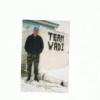
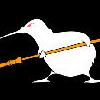

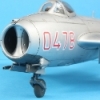
.thumb.jpg.d17ff607fc7e89ed057e63fcb6f2a888.jpg)
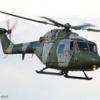

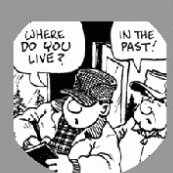
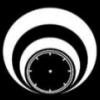




.thumb.png.03cf829e3ab23b3f04fe2590dd61bc3c.png)

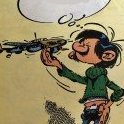
(510x640)-Copy(95x120).thumb.jpg.33073138e01aa81779639a845926753e.jpg)
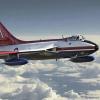
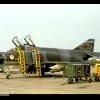



.thumb.jpg.cfc129272ffec824439b15e6013d5952.jpg)
